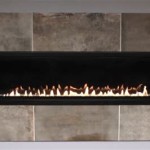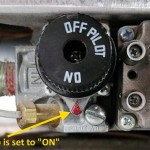Cast Iron Fireplace Inserts: A Comprehensive Overview
A cast iron fireplace insert is a heating appliance distinguished by its robust construction and efficient heat radiation capabilities. Designed to be installed within an existing masonry fireplace, these inserts offer a practical and aesthetically pleasing method to enhance the heating efficiency of a traditional fireplace. Consisting primarily of a cast iron body and a firebox, these inserts significantly reduce heat loss up the chimney, a common drawback of open fireplaces, and provide a more controlled and consistent heat output.
The functionality of a cast iron fireplace insert revolves around its ability to contain and intensify the combustion process within a closed environment. This containment allows for a more complete and efficient burning of fuel, typically wood, resulting in higher heat output and reduced emissions compared to a conventional open fireplace. The cast iron material, known for its excellent heat retention and radiation properties, absorbs the heat generated during combustion and slowly releases it into the surrounding room, creating a comfortable and even heat distribution.
The installation process generally involves inserting the unit into the existing fireplace opening and connecting it to a flue liner that runs up the chimney. This liner is crucial for venting the combustion byproducts safely and efficiently. Proper installation, often best handled by a qualified professional, is vital for ensuring the safe and effective operation of the insert.
Beyond their functional advantages, cast iron fireplace inserts often offer aesthetic appeal. They are available in a variety of designs and finishes, ranging from classic and ornate styles to more contemporary and minimalist options. This versatility allows homeowners to select an insert that complements the existing décor of their homes and adds a touch of elegance to their living space.
Key Advantages of Cast Iron Fireplace Inserts
Several factors contribute to the popularity of cast iron fireplace inserts as a heating solution. Their enhanced efficiency, durability, and aesthetic versatility make them a compelling choice for homeowners seeking to improve both the functionality and appearance of their fireplaces.
Improved Heating Efficiency: Traditional open fireplaces are notoriously inefficient, with a significant portion of the heat generated escaping up the chimney. Cast iron fireplace inserts, on the other hand, are designed to address this issue by creating a closed combustion chamber. This significantly reduces heat loss, allowing the insert to radiate a substantial amount of heat into the room. The improved efficiency translates into reduced fuel consumption and lower heating costs. Furthermore, the controlled combustion process allows for a more consistent and predictable heat output, avoiding the fluctuations in temperature often associated with open fireplaces.
The design of the insert, coupled with the typically included blower fan, facilitates the distribution of heated air throughout the room. The blower fan circulates air around the firebox, capturing the heat and forcing it out into the living space. This forced air circulation contributes to a more even and comfortable temperature distribution, eliminating cold spots and maximizing the heating effectiveness of the insert.
In terms of energy efficiency, cast iron fireplace inserts often boast higher heating efficiencies compared to traditional wood-burning fireplaces. This can be measured in terms of the percentage of heat produced that is actually utilized to warm the room. High-efficiency inserts can achieve significantly higher utilization rates, making them an environmentally conscious choice as well.
Durability and Longevity: Cast iron is a remarkably durable material known for its resistance to high temperatures and physical wear. This inherent robustness makes cast iron fireplace inserts highly resistant to warping, cracking, and other forms of damage that can occur under the extreme conditions of a firebox. The substantial weight and solid construction of these inserts contribute to their long lifespan, making them a durable and reliable heating solution for years to come.
The thick walls of the cast iron firebox provide excellent thermal mass, meaning they absorb and store heat efficiently. This characteristic not only enhances the heating performance of the insert but also contributes to its longevity. The ability to withstand repeated heating and cooling cycles without significant degradation ensures that the insert will maintain its structural integrity and functionality over an extended period of use.
Proper maintenance, such as regular cleaning and inspection, can further extend the lifespan of a cast iron fireplace insert. Removing ash and creosote buildup regularly helps to prevent corrosion and ensure optimal performance. Inspections can identify any potential issues early on, allowing for timely repairs and preventing more significant problems from developing.
Aesthetic Versatility: While functionality is paramount, the aesthetic appeal of a fireplace insert is also a significant consideration for many homeowners. Cast iron fireplace inserts are available in a wide range of styles, designs, and finishes, allowing homeowners to choose a model that seamlessly integrates with their existing décor. From traditional ornate designs to sleek and modern styles, there is a cast iron fireplace insert to suit virtually any aesthetic preference.
The finish of the insert plays a crucial role in its overall appearance. Options range from classic matte black to glossy enamel finishes in a variety of colors. Some inserts feature intricate detailing, such as raised patterns and decorative moldings, while others offer a more minimalist and understated look. The choice of finish and detailing can significantly impact the visual impact of the insert and its ability to complement the surrounding décor.
Furthermore, many cast iron fireplace inserts come with customizable options, such as different door styles and surround panels. These options allow homeowners to personalize the appearance of the insert and create a unique focal point in their living space. The availability of these customization options enhances the versatility of cast iron fireplace inserts and allows them to be adapted to a wide range of interior design styles.
Fuel Options and Considerations
While wood is the most common fuel source for cast iron fireplace inserts, some models are designed to accommodate other fuels, such as gas or pellets. The choice of fuel source depends on factors such as availability, cost, and personal preferences.
Wood-Burning Inserts: These are the traditional and most prevalent type of cast iron fireplace insert. They offer the classic ambiance and natural warmth associated with wood-burning fires. However, they require a readily available supply of seasoned firewood and involve some effort in terms of wood storage, handling, and loading. Wood-burning inserts also necessitate regular cleaning and ash removal.
The efficiency and performance of a wood-burning insert depend heavily on the quality and dryness of the firewood used. Seasoned firewood, which has been dried for at least six months, burns more efficiently and produces less smoke than green or unseasoned wood. Using the correct type of firewood is crucial for maximizing heat output and minimizing emissions.
Gas-Burning Inserts: These inserts offer the convenience of gas fuel, eliminating the need for firewood storage and handling. Gas-burning inserts are typically easy to operate, with push-button ignition and adjustable flame settings. They also tend to produce less ash and require less frequent cleaning compared to wood-burning inserts.
However, gas-burning inserts require a connection to a natural gas or propane line, which may involve additional installation costs. The operating cost of a gas-burning insert depends on the price of natural gas or propane in the area.
Pellet-Burning Inserts: These inserts burn compressed wood pellets, which are a renewable and relatively clean-burning fuel source. Pellet-burning inserts offer a good balance of convenience and efficiency. They typically feature automatic feeding systems that deliver pellets to the firebox as needed, maintaining a consistent heat output. Pellet fuel is also relatively easy to store and handle.
Pellet-burning inserts require electricity to operate the auger and blower fan. The cost of pellets can vary depending on the region and availability. Regular cleaning and maintenance are also necessary to ensure optimal performance.
Safety Considerations and Maintenance
Safety is paramount when operating any fireplace insert. Adhering to safety guidelines and performing regular maintenance are crucial for preventing accidents and ensuring the safe and efficient operation of the unit.
Professional Installation: Proper installation is essential for ensuring the safe and effective operation of a cast iron fireplace insert. It is generally recommended to have the insert installed by a qualified professional who can ensure that it is properly connected to the flue liner and that all safety requirements are met. A professional installation will also ensure that the insert is properly sized for the fireplace opening and that it meets all local building codes.
Carbon Monoxide Detectors: Carbon monoxide (CO) is a colorless and odorless gas that can be produced during combustion. Installing carbon monoxide detectors in the home is crucial for detecting any leaks or malfunctions that could lead to CO poisoning. Detectors should be placed near sleeping areas and in hallways leading to bedrooms.
Regular Cleaning and Inspection: Regular cleaning and inspection are essential for maintaining the safe and efficient operation of a cast iron fireplace insert. The chimney should be inspected and cleaned annually to remove creosote buildup, which can pose a fire hazard. The firebox should also be cleaned regularly to remove ash and debris. Inspecting the insert for any signs of damage or wear is also important. Any issues should be addressed promptly to prevent further problems.
Proper Fuel Storage: If using a wood-burning insert, proper firewood storage is essential for preventing insect infestations and ensuring that the wood remains dry and seasoned. Firewood should be stored in a well-ventilated area, away from the house.
Operating Procedures: Following the manufacturer's instructions for operating the fireplace insert is crucial for ensuring safe and efficient operation. This includes using the correct type of fuel, avoiding overfilling the firebox, and properly operating the air controls.

Gallery Henley Cast Iron Fireplace Insert Flames Co

Tradition Cast Iron Fireplace Insert 38 Victorian

Gallery Bolton Cast Iron Fireplace Insert Flames Co

A Guide To Cast Iron Fireplace Inserts Direct Fireplaces

A Mid Victorian Cast Iron Fireplace Insert Lassco England S Prime Resource For Architectural Antiques Salvage Curiosities

Alexandra Insert Fireplaces Stovax Traditional

Cast Iron Wood Fireplace Inserts Made In Usa Lopi Stoves

Henley Cast Iron Fireplace Insert 37 Victorian

Steptoes Renovation Supplies

Lux Cast Iron Premium Insert Polish Detail
Related Posts








